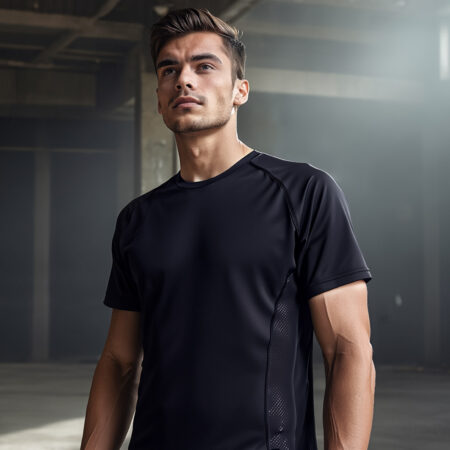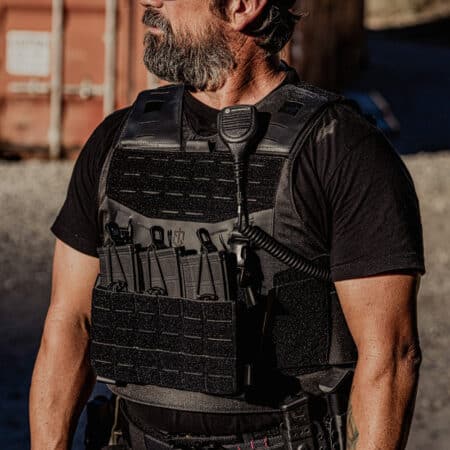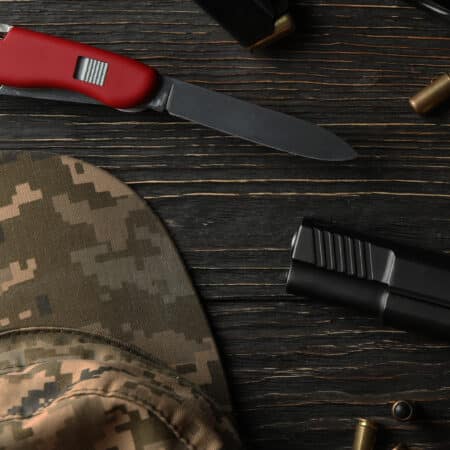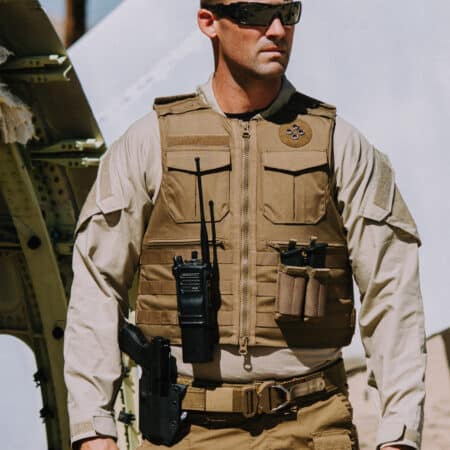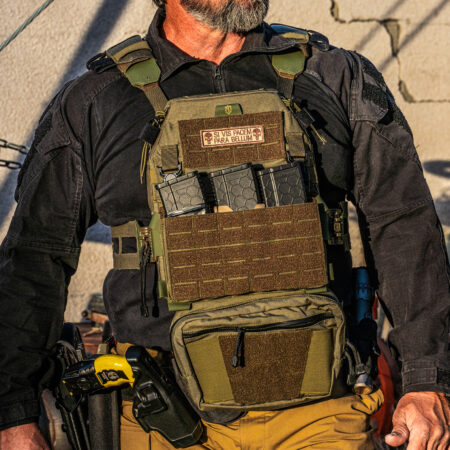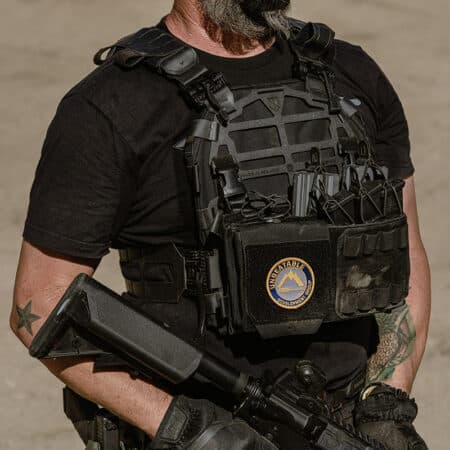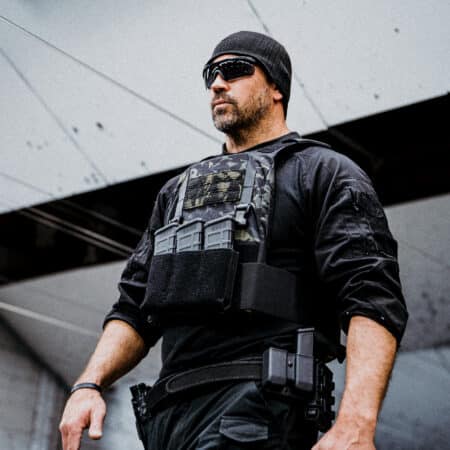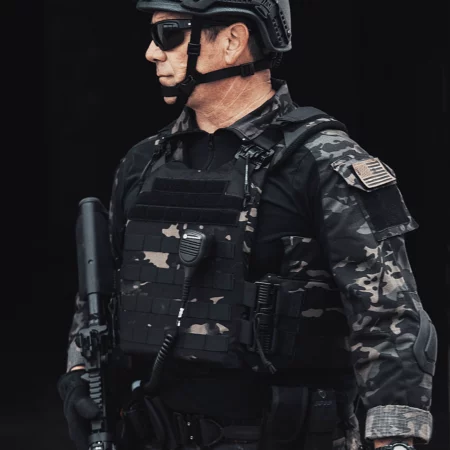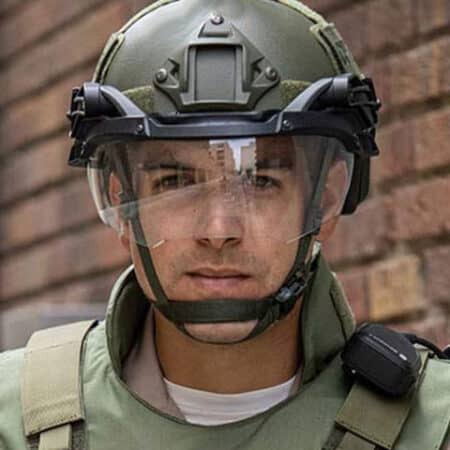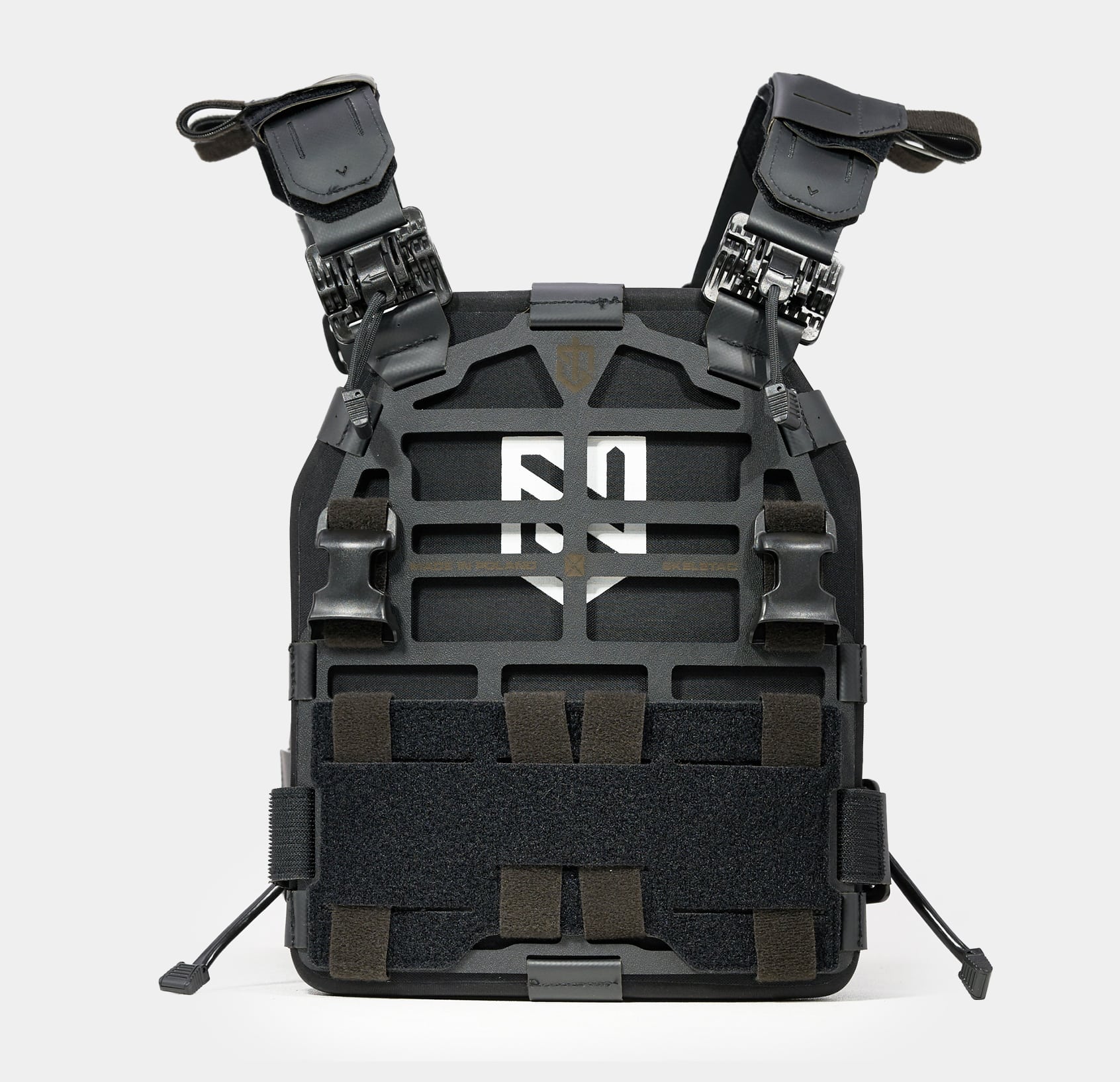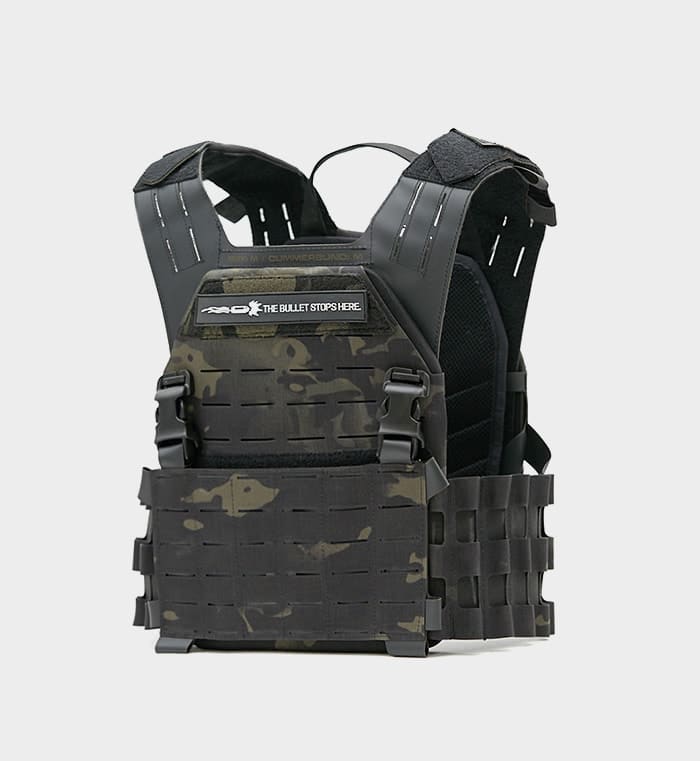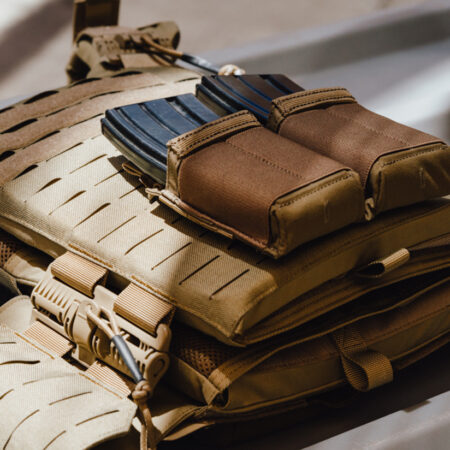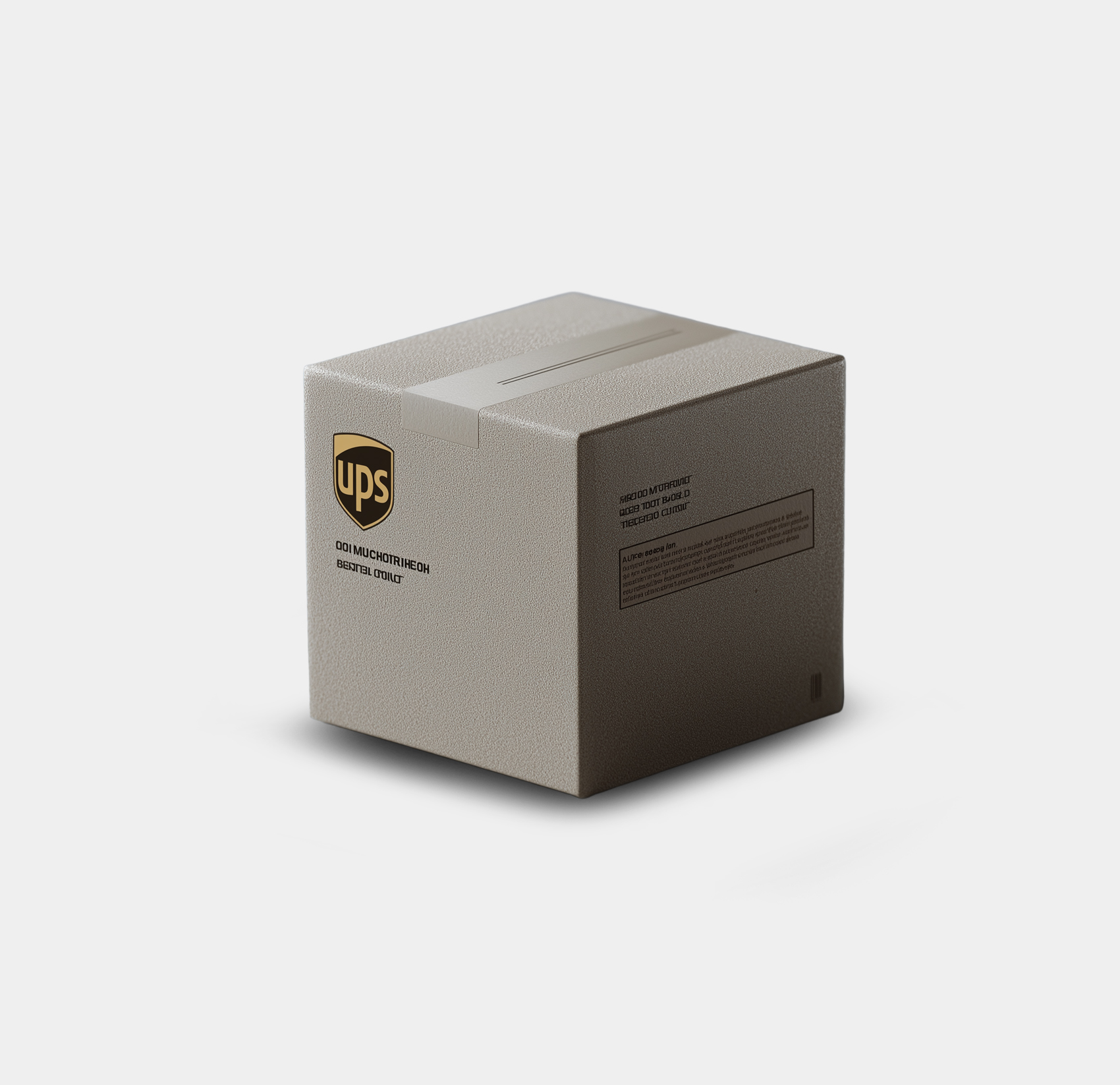- How to Choose the Right Plate Carrier for Your Tactical Needs
- Understanding the Difference Between Plate Carriers and Bulletproof Vests
- Top Features to Look for in a High-Quality Plate Carrier
- What Armor Plates Are Compatible with Your Plate Carrier?
- How to Properly Fit and Adjust a Plate Carrier for Maximum Protection
- Why Modular Plate Carriers are Essential for Tactical Operations
- The Pros and Cons of Soft Armor Inserts vs. Hard Armor Plates in Plate Carriers
- Understanding the Weight Distribution of Armor Plates in Plate Carriers
- How to Choose the Right Armor Plate for Your Plate Carrier Setup
- How to Maintain and Care for Your Plate Carrier and Armor Plates
- Why a Lightweight Plate Carrier Can Improve Your Tactical Performance
- Comparing Different Plate Carrier Styles: Low Profile vs. Heavy-Duty
- How Plate Carriers Can Improve Tactical Load Distribution
- Plate Carrier Add-ons and Accessories to Enhance Tactical Functionality
- How Plate Carriers and Armor Plates Work Together for Optimal Protection
- What is the Difference Between Single and Multi-Curve Armor Plates for Plate Carriers?
- How to Set Up Your Plate Carrier for Law Enforcement, Military, or Civilian Use
- The Importance of Quick-Release Systems in Modern Plate Carriers
- How to Test the Fit and Function of Your Plate Carrier in Real-World Scenarios
- Upgrading Your Plate Carrier: What to Consider When Changing Armor Plates
How to Choose the Right Plate Carrier for Your Tactical Needs

If you want to choose a plate carrier that perfectly aligns with your tactical needs, you need to consider several factors, with fit, weight, modularity, comfort, and armor plate compatibility at the top of the list.
Firstly, make sure that the fit is snug but allows mobility. Your plate carrier should be tight enough that it doesn’t shift around on your body, but should still allow you to breathe easily without restricting your mobility. Adjustable straps and cummerbunds are essential for a customized fit.
Next, focus on weight. Lightweight carriers improve mobility but may sacrifice comfort or protection. Heavier carriers provide more features and durability, but be mindful of the combined weight of the carrier and armor plates. Balancing protection with mobility is critical.
Modularity is another key factor, so look for MOLLE-compatible plate carriers. These carriers allow you to carry additional gear on your carrier like extra magazines, Med Kits, and other pouches. Some heavy plate carriers also have an internal rigid chassis system which makes it easier to carry all the weight of your gear.
If you have to wear your carrier for long periods, then you need to consider comfort as well. Look for plate carriers that have padded shoulders, and plate pockets. You should also look for features like mesh padding which improves airflow and helps you stay cool when wearing your carrier.
Finally, armor plate compatibility is vital. Make sure that your carrier can fit the size and shape of your armor plates, whether they’re SAPI, shooter’s cut, or swimmer’s cut. Check if the carrier accommodates both front and side plates, and verify the pockets fit the thickness of your plates.
By considering these factors, you can choose a plate carrier that offers the right balance of protection, mobility, and customization for your operational needs.
Understanding the Difference Between Plate Carriers and Bulletproof Vests
While both terms, Bulletproof vest, and Plate Carrier, refer to armor setups, they are quite different.
The term bulletproof vest is typically used for soft armor vests, which use flexible armor panels made from Kevlar or other aramid fibers. Therefore, bulletproof vests are lighter, but they also offer lower levels of protection. Most bulletproof vests offer level Level IIIA ballistic protection and can stop only handgun rounds.
Still, they are very useful, since they are lightweight, easy to conceal, and offer better coverage than armor plates.
On the other hand, plate carriers are specifically designed to carry hard armor plates, which offer protection against rifle calibers. These can be level III or level IV armor plates.
Now as far as features are concerned, both plate carriers and bulletproof vests can have tactical features like MOLLE Webbing. Quick release systems, and modular designs. Both are designed to be adjustable, and both are used by law enforcement and security personnel.
The key difference is the level of protection you get from both. If you need lower levels of protection, then a lightweight bulletproof vest is the way to go. But if you’re supporting hard armor plates, then you need to opt for plate carriers.
Product Comparison
Top Features to Look for in a High-Quality Plate Carrier

When selecting a high-quality plate carrier, there are several important features that enhance both protection and functionality.
First off, look for MOLLE compatibility. MOLLE stands for (Modular Lightweight Load-carrying Equipment and it is a standardized system of webbing that allows you to mount a wide range of tactical accessories like pouches, holsters, magazines, and medical kits on your plate carrier. This modular system allows you to customize your loadout based on mission requirements, giving you flexibility and quick access to your tools.
Next up, Comfort is critical, especially during long missions or patrols. Look for plate carriers with adequate padding on the shoulders, back, and sides. Ventilated padding can also improve breathability, reducing heat build-up and sweat, especially in hot or active environments.
A good plate carrier should also be highly adjustable to accommodate different body sizes and types. Adjustable shoulder straps and a cummerbund (waist panel) are essential for achieving a snug fit without sacrificing mobility. Proper adjustability ensures the armor covers vital areas while preventing the carrier from shifting during movement.
Lastly, Make sure your carrier is compatible with the size and shape of your ballistic plates. Standard plates include SAPI, ESAPI, and shooter cuts, which offer varying degrees of mobility and coverage. Also, consider whether the carrier has pockets for side plates, which can enhance your protection.
What Armor Plates Are Compatible with Your Plate Carrier?

At Are Link Armor, our plate carriers are designed to work with all kinds of armor plates, whether they are made from Ceramics, PE, or steel. The main thing to keep an eye out for when it comes to armor plate compatibility is Plate carrier size.
Now, you should remember that plate carriers are not sized like normal clothes or bulletproof vests. Instead of being sized according to your body, they are sized according to the armor plates they can carry.
Most of our plate carriers can accommodate up to 10×12” armor plates, in SAPI, Shooters cut, and Swimmers cut profiles. However, if you are a big guy, and need larger plates to cover your vital organs, you can also choose our Quadrelease Ultra or React Ultra Tactical plate carriers, which can accommodate up to 11×14” armor plates.
So, no matter what size, type, or profile armor plates you have, you can find a suitable tactical plate carrier at Ace Link Armor.
How to Properly Fit and Adjust a Plate Carrier for Maximum Protection

Properly fitting and adjusting your plate carrier is essential to ensure maximum protection and comfort. Follow these step-by-step instructions to get the best fit for your body and mission requirements:
Step 1: Choose the Right Size
Before adjusting, make sure your plate carrier is the correct size for both your body and the armor plates you’ll be using.
Step 2. Insert Armor Plates
Place your ballistic plates into the carrier’s designated plate pockets. Ensure the plates are seated correctly:
The top of the front plate should sit just below your collarbone (around the sternal notch), covering the vital organs like the heart and lungs. The back plate should align with the front plate to provide symmetrical and balanced coverage, protecting your spine and kidneys. If your plate carrier supports side plates, Insert them into their dedicated pouches, ensuring they sit flush with your ribs for additional side protection.
Step 3. Adjust the Shoulder Straps
Begin by adjusting the shoulder straps so that the front and back plates sit at the correct height, as explained. Adjust the straps evenly on both sides to avoid shifting the carrier to one side during movement.
Step 4. Adjust the Cummerbund
Next, tighten the cummerbund (the waist strap system) to ensure a snug fit around your torso. The cummerbund should be tight enough to keep the plates in place without restricting your breathing or movement.
Once the shoulder straps and cummerbund are properly adjusted, fine-tune for comfort by adjusting any additional padding or inserts.
Step 5. Check for Mobility:
Ensure you can twist, bend, and move your arms freely without feeling restricted by the carrier. A properly fitted cummerbund will prevent the carrier from bouncing or shifting while you’re running or moving in dynamic scenarios.
Step 6. Verify Coverage:
Lastly, ensure that the armor plates cover your vital areas
Why Modular Plate Carriers are Essential for Tactical Operations

Modular plate carriers are essential for tactical operations because they provide the flexibility to adapt to different missions and environments. This versatility is made possible through systems like MOLLE (Modular Lightweight Load-carrying Equipment), which allows users to customize their load-outs with a wide range of tactical gear and accessories.
1. Customization for Different Missions
Every Mission calls for a different set of tools. A modular plate carrier allows you to configure your tactical setup based on the specific requirements of the mission. For instance, Combat missions may require extra magazine pouches, grenades, and medical kits, whereas, Rescue or breaching operations might need additional tools, communication devices, or breaching charges.
2. Adaptability to Changing Environments
Modular carriers also allow operators to adjust their load-outs to suit different environments, from urban settings to desert or jungle warfare. A modular design can accommodate extra hydration systems for hot climates, more ammo for extended missions, or quick-access medical pouches for high-risk areas.
3. Efficient Use of Space
Lastly, With a MOLLE system, operators can efficiently use the space on their plate carrier, arranging gear in a way that balances the weight and allows easy access.
In summary, modular plate carriers with MOLLE systems enhance the efficiency, flexibility, and mission readiness of tactical operators, making them an indispensable tool for adapting to the diverse challenges of modern combat and law enforcement operations.
Product Comparison
The Pros and Cons of Soft Armor Inserts vs. Hard Armor Plates in Plate Carriers

When you’re picking armor for your personal protection system, it’s important to consider your options. You need to understand the benefits and limitations of both soft armor panels and hard armor plates to make an educated decision.
Soft Armor Inserts
Pros:
- Lightweight and Flexible: Soft armor inserts, typically made from materials like Kevlar or Dyneema, are much lighter and more flexible than hard plates.
- Comfort: Soft armor is more comfortable for daily wear and easier to move in, especially for tasks that require agility and flexibility.
- Concealability: Soft armor inserts are thin and can be worn discreetly under clothing, making them suitable for low-profile operations or situations where concealing protection is necessary.
Cons:
- Limited Protection: Soft armor can only stop handgun threats, and is ineffective against rifle rounds and armor-piercing bullets. It won’t provide the level of protection needed for high-threat environments where rifles are in play.
- Less Durability: Soft armor is more susceptible to wear and tear, especially in rough conditions, and may require frequent replacement compared to hard plates.
Hard Armor Plates
Pros:
- Superior Protection: Hard armor plates (Level III and IV), made from materials like ceramic or steel, offer protection against rifle rounds and higher-velocity threats.
- Enhanced Multi-Hit Capability: High-quality hard plates, especially ceramic ones, can handle multiple hits from rifle rounds, making them reliable in prolonged engagements.
Cons:
- Heavier: Hard plates are significantly heavier than soft armor, which can reduce mobility and cause fatigue during long missions or patrols.
- Less Flexibility: Hard plates are rigid, which can make them uncomfortable to wear for extended periods and limit your range of motion.
- Less coverage: Because of their rigid construction, armor plates offer less coverage than bulletproof vests with soft armor panels.
Understanding the Weight Distribution of Armor Plates in Plate Carriers

The weight distribution of armor plates in a plate carrier can have a significant impact on your mobility, balance, and endurance, especially during extended use. Properly managing this weight allows you to stay comfortable and maintain operational effectiveness.
Mobility
Heavy armor plates, or plates that aren’t the right size, can restrict movement, especially when improperly balanced. If the front plate is too heavy or positioned too low, it can cause difficulty when running, crouching, or aiming your weapon. Likewise, heavy side or back plates can restrict your ability to twist or turn efficiently. Balancing the weight of the plates is key to maintaining agility in tactical situations.
Balance and Stability
Uneven weight distribution in your plate carrier can lead to fatigue and strain on the body. For instance, Front-heavy carriers can cause you to lean forward, which strains your lower back and neck, leading to discomfort over time. Additionally, Uneven weight distribution can throw off your center of gravity, making it harder to maintain balance.
A well-fitted carrier should distribute the weight of the front, back, and side plates evenly across your body to avoid excess strain and maintain a stable center of gravity.
Endurance
Lastly, carrying heavy plates for long periods is obviously going to make you tired. Additionally, the weight of the gear mounted on the carrier can also contribute to fatigue and exhaustion. Ideally, you should choose light armor plates, and optimize your gear so that you are only carrying the things that the mission requires.
How to Choose the Right Armor Plate for Your Plate Carrier Setup

When it comes to choosing armor plates, you’ll have a lot of options. Armor plates can be made from various materials, and are available at a wide range of price points. However, the most common types of armor plates are Ceramic, Steel, PE, and Composite.
Ceramic Plates are made from Ceramic materials. These plates are lighter than Steel plates and offer better protection since they don’t cause spalling. However, they can be more expensive than steel plates.
If you want to go cheap, steel plates are the way to go. They are very affordable and have a very long shelf life as well. However, their main drawback is their weight, and the risk of spalling once the rubberized coating breaks off.
You can also opt for PE Plates. These plates are very lightweight, and they offer excellent protection as well. They are made from Ultra High Molecular Weight Polyethylene, which makes them very light and very durable. However, these plates are quite expensive as well, and as a stand-alone plate, they can’t offer more than level III Ballistic protection.
Lastly, you have your composite plates. These plates are designed to stop high-caliber and armor-penetrating threats. Most level IV armor plates have a composite construction. They have a ceramic strike face, with a backing either made from steel, or PE. Ceramic + PE composite plates are the best option when it comes to protection. They offer high levels of ballistic protection and are considerably lighter than standalone steel plates, or Ceramic + Steel composite plates.
So, to choose the right armor plate for your plate carrier setup, you need to consider three things. Your budget, the protection level you need, and the size of the armor plate. If you can afford it, and you need level III protection, then PE plates are the best, but Ceramic plates are a close second if you want the most bang for your buck. If you want protection against large caliber rifle rounds, and Armor Penetrating threats, then you should choose Ceramic + PE composite plates
Armor Plate Comparison
How to Maintain and Care for Your Plate Carrier and Armor Plates
With proper maintenance, you can significantly prolong the lifespan of your carrier and plates. Here’s a guide to help you out. :
Cleaning Your Plate Carrier
Start by taking out the armor plates before washing the carrier to avoid damaging them. Use a mild detergent and cold water to clean the fabric. Hand washing is ideal, but if using a machine, opt for a gentle cycle. Most plate carriers are made from Durable Synthetic Materials like Nylon, which can deteriorate when exposed to hard chemicals or heat. So, make sure not to use bleach or strong detergents, and Do not use a dryer.
Cleaning Your Armor Plates
For hard plates (ceramic, steel, or polyethylene), use a damp cloth to wipe away dirt and debris. Avoid submerging the plates in water, as moisture can seep into the protective layers. Gently clean the surface without using abrasive materials or harsh cleaning agents.
Storing Your Plate Carrier and Armor Plates
Moisture, heat, and direct sunlight can degrade armor materials. Store both the carrier and plates in a cool, dry environment to prevent weakening over time. Also, remember not to stack heavy items on top of your plates or carrier. This can deform soft armor or damage the structure of hard plates, particularly ceramic ones.
Inspecting Your Gear
Regular inspections are also an essential part of armor maintenance. Inspect the fabric of your carrier for rips, loose stitching, or worn areas, especially around the MOLLE webbing and shoulder straps. Also, remember to check your Ceramic plates for cracks, or signs of wear. Steel and polyethylene plates should be inspected for dents, warping, rust, or other deformations.
Why a Lightweight Plate Carrier Can Improve Your Tactical Performance

In a combat environment, extra weight can even get you killed. You should be as light and as mobile as possible, and a lightweight plate carrier can help with that.
A lighter plate carrier allows for greater freedom of movement, enabling you to quickly respond to threats or maneuver through tight spaces. Whether you’re running, climbing, or taking cover, less weight on your body means more agility, making it easier to perform dynamic movements without being bogged down.
Additionally, The longer you wear a heavy carrier, the more fatigue sets in, especially during extended missions or patrols. A lightweight carrier reduces the strain on your shoulders, back, and legs, allowing you to stay alert and maintain stamina over longer periods. Less fatigue means you can stay focused for longer, and make better decisions.
Therefore, a lightweight plate carrier setup, with optimized gear, and the right armor plates can significantly improve your tactical performance.
Comparing Different Plate Carrier Styles: Low Profile vs. Heavy-Duty
If you want to choose the perfect plate carrier, you should also learn about different plate carrier styles or profiles. For the most part, plate carriers can be divided into two styles. You have your minimalist, or low-profile plate carriers, and then you have your heavy-duty plate carriers. Let’s take a look at the pros and cons of both types.
Low-Profile Plate Carriers
Low-profile carriers are designed to be slim and discreet, making them ideal for covert operations or when blending in is necessary. They aren’t going to be as concealable as a covert bulletproof vest, because of the hard armor plates, but you can still easily conceal them under a jacket. These carriers are also minimalistic and lighter, allowing for increased mobility and reduced fatigue during long operations.
However, These carriers often lack MOLLE webbing or additional pouches, limiting the amount of gear, ammo, or tools you can carry.
Heavy-Duty Plate Carriers
Heavy-duty plate carriers are made to handle heavy armor plates and are equipped with MOLLE webbing and multiple pouches, allowing you to carry more gear, from magazines and radios to medical supplies. These plate carriers are more likely to have features like quick-release buckles, side plate compatibility, emergency drag handles, and the ability to house both soft armor panels and hard armor plates for added protection. Some heavy-duty plate carriers like our HRT LBAC plate carrier also come with an integrated rigid chassis system, which can make it a lot easier for you to carry the weight of your gear and armor plates.
As far as drawbacks are concerned, these plate carriers are also quite heavy. They also aren’t suitable for situations where you want to keep a low profile, as they can be quite bulky and visible.
How Plate Carriers Can Improve Tactical Load Distribution

High-quality Plate carriers are designed to balance the weight of armor plates between the front, back, and sometimes sides, ensuring that no one part of the body carries too much load. This even distribution helps prevent discomfort and fatigue, particularly in the shoulders and lower back, which are often strained by poorly balanced gear.
Some plate carriers also use an integrated chassis system to distribute the weight of your armor plates and tactical gear evenly across your body, making sure that no single part carries all the weight.
These plate carriers also have padded shoulders, and cummerbunds, which allow the carrier to feel comfortable, even when it is carrying a lot of weight.
Moreover, it is also important to understand that apart from the design of the carrier, your plate carrier setup also plays a key role in weight distribution. You need to make sure that your carrier isn’t too front-heavy, with all the gear mounted on the front, and nothing on the back. Some people also use bigger and slightly heavier armor plates on the back to balance out the additional weight of the gear mounted on the front.
Plate Carrier Add-ons and Accessories to Enhance Tactical Functionality
One of the primary purposes of plate carriers, besides carrying armor plates, is to give you a place to mount your tactical gear. The right setup of tactical gear on your carrier makes sure that you are organized, mobile, and mission-ready. Here are some common accessories:
Magazine Pouches:
In any combat situation, you need to have extra ammo for your primary and secondary firearms. Mounting these magazines on your carrier allows you to access them quickly and efficiently when it’s time to reload.
Most people use a single stick triple magazine pouch, which can store three rifle magazines, however, you can also get double stack pouches which can store six.
Medical Pouches (IFAK)
An Individual First Aid Kit (IFAK) is vital for treating injuries in the field. Medical pouches allow you to carry life-saving supplies such as tourniquets, gauze, and bandages.
Hydration Systems:
Staying hydrated during long missions is crucial. Hydration pouches allow you to carry a water bladder on your back, integrated into the plate carrier for convenient access via a drinking tube.
Admin Pouches
Admin pouches are used for carrying small, essential items like maps, pens, notepads, multi-tools, and other mission-specific gear. These pouches usually have organized compartments and are easily accessible, helping to keep critical tools within reach.
Mission-specific gear:
You can mount almost anything that is MOLLE compatible onto your plate carrier. Different missions call for different types of gear, all of which can be mounted onto your carrier according to your preferences, and the mission requirements. For instance, some soldiers, and law enforcement officers may mount cameras on their carriers
How Plate Carriers and Armor Plates Work Together for Optimal Protection

Though it is the armor plates that actually stop the bullets, they can’t be functional unless they are used with a suitable plate carrier. The plate carrier is designed to hold armor plates securely in position, covering critical areas like the chest, back, and sometimes sides. Its adjustable straps and durable fabric keep the plates snug against the body, ensuring they don’t shift during movement or combat. The carrier also evenly distributes the weight of the plates, reducing strain on the wearer and maintaining balance.
Additionally, in a combat situation, your protection isn’t only about defense, but the ability to put forth an actionable offense as well. A plate carrier also carries your tactical gear, like extra magazines, and med kits, which help you defend yourself, and treat any injuries if you are hit.
In this way, both plate carriers, and Armor plates work together to help you survive, and eventually conquer, any combat situation.
What is the Difference Between Single and Multi-Curve Armor Plates for Plate Carriers?
When you are in the market for armor plates, you’ll have the choice between standard and multi-curve armor plates, and it is important to know the pros and cons of both.
Multi-curve plates feature several bends, offering a more ergonomic fit by contouring the shape of the chest and sides. They follow the natural curves of the body more closely than single-curve plates. This is why they are significantly more comfortable than standard plates, especially for prolonged use. The ergonomic design reduces pressure points and allows for better mobility, making them ideal for extended missions.
However, as you might expect, due to their advanced design and manufacturing process, multi-curve plates are typically more expensive. Multi-curve plates are also great for women.
Standard armor plates are affordable, and they still offer excellent protection. So, if you have to wear your armor for extended periods, and you want something that is more comfortable, then multi-curved plates are the way to go, but if you are only getting your armor plates for home defense, and you’ll probably only wear them occasionally, then you can’t go wrong with standard straight armor plates.
How to Set Up Your Plate Carrier for Law Enforcement, Military, or Civilian Use
When you are setting up your plate carrier, you need to consider your specific situational needs. For instance, people in law enforcement, Military, and civilian roles, all require different kinds of setups for a practical and effective armor system. Here are some suggested setups for these roles.
Law Enforcement Setup:
- Armor Plates: Level IIIA soft armor for daily patrols or Level III+ or IV for high-risk operations.
- Magazine Pouches: Minimal, usually two rifle mags and one pistol mag for quick reload.
- Medical Pouch: An IFAK (Individual First Aid Kit) for emergency trauma care.
- Radio Pouch: Essential for communication with dispatch or other officers.
- Handcuff Pouch & Flashlight: Specific law enforcement tools within easy reach.
- Additional Gear: Baton, pepper spray, or taser holster may be integrated.
Military Setup
- Armor Plates: Level IV plates to protect against rifle rounds and shrapnel.
- Magazine Pouches: Carry multiple magazines (4-6 rifle mags) for sustained firefights.
- Hydration Carrier: Essential for long missions, integrated into the back of the carrier.
- Admin Pouch: For maps, GPS, or mission-specific documents and tools.
- Grenade or Utility Pouches: Space for grenades, extra ammo, or mission tools like a knife.
- Radio Pouch: Larger military radios and communication devices.
- Additional Gear: Space for night vision devices, breaching tools, or other mission-specific items.
Civilian Setup
- Armor Plates: Level III+ or IV plates, depending on the perceived threat level.
- Magazine Pouch: Usually 1-2 rifle mags or pistol mags, depending on the firearm.
- Medical Pouch: A compact IFAK with essential trauma supplies.
- Utility Pouch: For carrying multitools, a flashlight, or personal defense items.
- Hydration Carrier: Optional but useful for longer-range excursions or disaster preparedness.
- Additional Gear: Space for additional home-defense items, such as pepper spray or a taser.
The Importance of Quick-Release Systems in Modern Plate Carriers

Quick-release systems are becoming a standard feature in most modern plate carriers.
These systems help you quickly put on or take off your armor, improving your overall operational efficiency and saving valuable seconds in emergency situations.
In life-threatening situations such as injury or entrapment, quick-release systems enable fast removal of the plate carrier. This can be crucial for first responders who need to provide medical care, or for military personnel needing to escape dangerous situations like falling in water or volatile vehicle accidents.
Quick-release systems simplify putting on or taking off a plate carrier. In tactical scenarios where every second counts, this efficiency can be a game-changer, especially during rapid gear changes, medical emergencies, or extraction.
How to Test the Fit and Function of Your Plate Carrier in Real-World Scenarios

You can adjust the fit of your plate carrier, along with its tactical setup as much as you want, but how can you be certain that it will work in real-world scenarios? Here is a quick guide to help you test the fit and function of your plate carrier setup, and make sure that you are ready for any combat situation.
Testing the fit:
Testing the fit of your plate carrier is quite easy. Once you’ve made all the adjustments, and feel like you got the fit right, try doing some quick exercise. You can do some burpees, to engage your body’s full range of motion, and see if the plate carrier stays in its place without shifting around.
You can also run around, duck behind the cover, and get into different shooting positions to see how your plate carrier reacts to all the motion. Ideally, it should shift around your body, and should not restrict your movement.
Another important factor to keep in mind is that armor can sometimes get in the way when you are trying to shoot. For instance, ill-fitted plate carriers can make it difficult for you to shoulder your rifle, and shoot it properly. Therefore, make sure to shoulder your rifle, and do some quick drills with your primary and secondary firearms.
Testing the function:
Now, when it comes to function, the only way to gauge your plate carrier’s effectiveness is to use it in a simulation high-stress combat environment. You can take some shooting courses, which incorporate various shooting, and tactical drills aimed at making you a better operator. Ideally, You should take these courses with your plate carrier on, and analyze the effectiveness of your tactical setup.
Additionally, you will also find many more experienced shooters in these classes, who can really help you perfect your plate carrier setup.
Upgrading Your Plate Carrier: What to Consider When Changing Armor Plates
When upgrading your plate carrier with new armor plates, it’s essential to consider several factors to ensure the new setup fits your protection needs and tactical requirements. Here’s what to keep in mind:
Threat Level
Identify the types of threats you’re most likely to face. Upgrading from Level III to Level IV plates, for example, provides better protection against armor-piercing rounds, but may not be necessary for all situations. Choose armor plates that match the level of protection required for your mission, whether it’s for law enforcement, military operations, or civilian self-defense.
Weight and Mobility
Consider your experience with your current plates. If you find them heavy, think about going for a lighter option when you upgrade. If you have the budget for it, you can choose ultralight PE Armor plates, or you can use a composite plate made from PE and Ceramics if you want higher protection. Strike a balance between protection and mobility based on your operational needs. Consider if the additional weight is worth the added protection for your specific use case.
Compatibility
Ensure the new plates fit securely in your existing plate carrier. Standard sizes are 10”x12”, but you’ll want to confirm the carrier’s dimensions to avoid ill-fitting armor. Also, make sure that your new plate carrier has MOLLE webbing so that it is compatible with all of your tactical gear.
Material and Durability
Plates are made from ceramic, steel, or polyethylene, each with its pros and cons regarding durability, weight, and ballistic resistance. Choose a material that suits your operational environment—ceramic for high protection, polyethylene for lightweight mobility, steel for durability, and a budget-friendly option.
Armor Plate Profile:
Armor plates are available in multiple profiles. Choose options like Shooters City, or Swimmers Cut if you want to prioritize movement and mobility, especially if normal SAPI cut plates aren’t ideal for your body type. You can also opt for multi-curve Armor Plates, which have a curved profile that matches the natural contours of the human body. These plates tend to be more comfortable.



